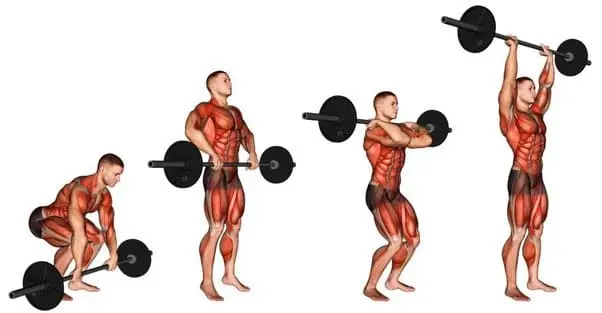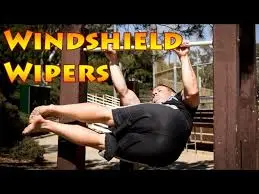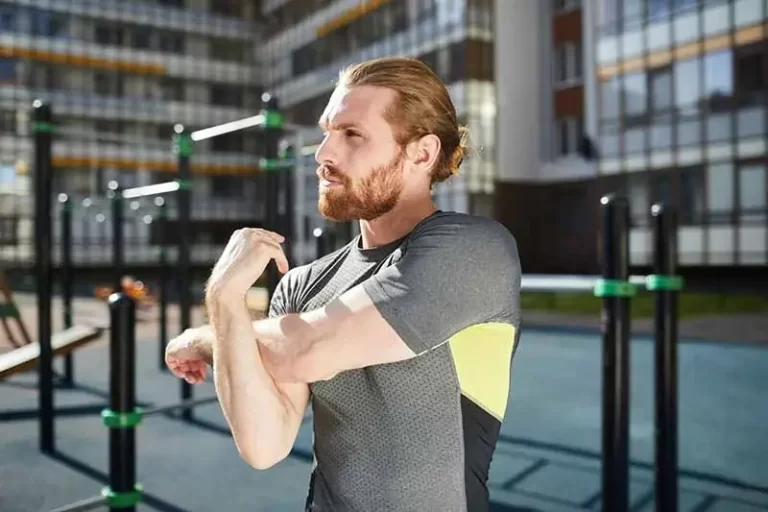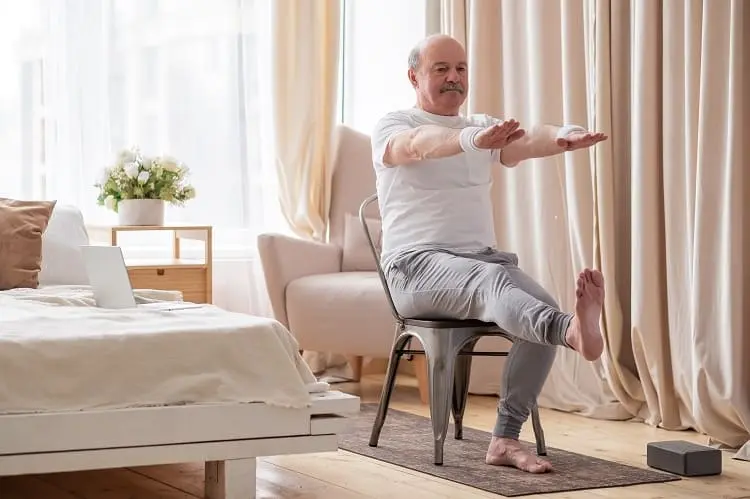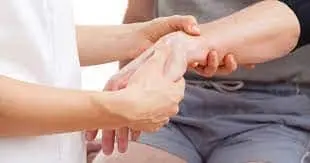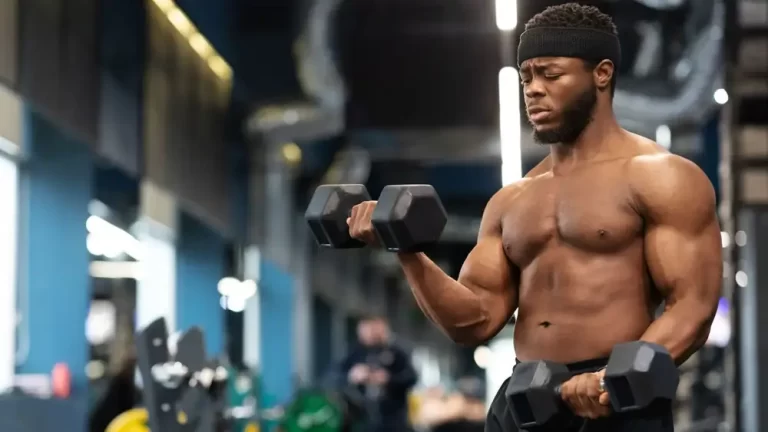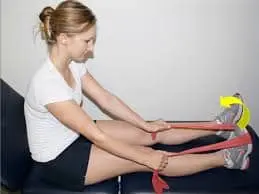What Muscles Do Deadlifts Workout?
Comprising several muscle groups, Deadlifts Workout is an excellent full-body workout that works the entire body.
Introduction:
It’s a popular belief that deadlifts are the first complex movement. And for a valid reason. It works several muscle groups at once, improves posture, and increases general strength. We examine the main and secondary muscle groups in detail in this blog post, as we examine which muscles are used in deadlifts.
Deadlifts, if you favor heavy lifting, are an excellent addition to any weekly workout routine. Deadlifts work multiple muscular groups at once, which helps you gain strength and increase your level of fitness quickly. workout-wise, deadlifts support the development of the muscles required to do everyday tasks like reaching down to grab groceries or picking up your kids or pets.
Among all the conventional workouts, deadlifts have a very high functional duration. Deadlifting “transfers into our day-to-day lives of being able to pick stuff up off the ground and do so effectively and safely” due to the strength and technique learned. Deadlifting improves our movement patterns and is an effective workout we can include in our routines because it exercises so many different muscles at once. In such movements, most of the muscles in the body are used.
It’s hard to learn workouts like deadlifts properly. Speak with a trainer or other fitness expert if you use a gym. They can demonstrate the correct procedure. Make sure you are doing the workout correctly by having the trainer observe you. To perform a deadlift, you will bring up the barbell with a flat back and push back with your hips. Deadlifts may be beneficial since they are an effective exercise for progressively strengthening multiple large muscle groups.
Main muscles worked during deadlifts:
The deadlift is a difficult multi-muscle workout. Deadlifts are a very effective workout for working out multiple muscle groups. Exercises such as the deadlift help with posture and lower the chance of injury from routine work. Exercises that concentrate a single muscle group, such as leg extensions and curls for the hamstrings and quadriceps, are less likely than deadlifts to promote overall muscular growth and a well-rounded body type. Because they use many muscles, they might increase calories burned while promoting fat loss.
The several muscles involved in deadlifts and their functions are listed below.
Primary muscles
- Erector Spinae
The erector spine in the lower back is responsible for spinal extension and maintaining the body’s erect position while lifting. The erector spine is a group of muscles that runs the length of the spine, connecting the base of the skull to the pelvis. They provide the spine with support, which is crucial for maintaining good posture. They support and stabilize the spine during the deadlift by helping to maintain its locked posture.
- Gluteus Maximus
The main muscle is used when extending the hips during an activity. Large muscles found in the buttocks are called gluteal muscles. Turns from the outside are essential for the hip portion of the deadlift as well as hip extension and abduction.
- Quadriceps
Your quadriceps can help you push the weight off the ground. Remember to “push your feet through the floor” to fully engage your quadriceps when completing deadlifts. Four muscles in the front of the leg make up the quadriceps. For knee extensions, they are necessary. The quadriceps support the deadlift motor by supporting knee extension, also known as leg extension. Because the knee is just slightly bent, the quads need to be in a firm position, just like the glutes.
- Hamstrings
Supports in the lift by helping with hip extension and knee flexion. You can use your hamstrings to push your pelvis forward. Once the bar is several feet above the ground, they start to get active. The hamstrings help the glutes extend their hips during the lockout. Pulling on the hamstrings increases as the knees straighten, bringing the hips up to the bar.
- Hip adductors
keeps the hips and thighs stable during lifting. The pelvis moves forward by your adductors as well. If you can get your hips “over the bar” faster, you’ll be more strong.
- Gastrocnemius
The rear of the lower leg has a muscle called the gastrocnemius, which is also referred to as the calf muscle. Its primary function is to lower the foot or plantarflex. It also helps in knee flexion, which is the shortening of the knee that happens during a deadlift.
Secondary Muscles
- Latissimus Dorsi
The latissimus dorsi, or lats, are responsible for stabilizing the upper back. Your Latissimus Dorsi also helps the bar stay close to your body by tracking down your shins. The Latissimus Dorsi and the rhomboids work together to stop the bar from tracking forward in front of your toes, which could cause harm.
The muscles of the trapezius stabilize the scapula and upper back. To have a strong deadlift lock, you need a strong trapezius.
- Abdominal
The core, or abdominal muscles, are responsible for stabilizing the spine and preventing any motion that can injure or create pain.
Deadlifts Workout advantages:
- Develop Your Functional Movement
The deadlift is a physical workout that resembles a common daily task: lifting objects off the ground or a low surface. You’ve performed a deadlift (even if maybe not a safe one) if you’ve ever leaned to grab something from the floor without ever setting foot on a lifting platform. Training deadlifts gives us the strength and hip-hinging biomechanics we need to safely lift objects that are low on the body.
- Bone density
The deadlift can increase bone density and reduce the risk of injury by putting the right amount of stress on the bones. Resistance workouts, like deadlifts, are especially crucial for bone health as people age.
- Increase strength and size of muscles
A good workout is the deadlift. An effective way to develop muscles in both the upper and lower body. That means it can help with improving general strength and athleticism. When a person gains muscle mass, their metabolism may also rise.
- Availability
The deadlift is a workout that can be done by people of various fitness levels because it can be done with a range of weights. Similar to bottles of water, deadlifting is a workout that can be performed at home using handmade weights, resistance bands, or weights. A gym visit is not necessary for this type of exercise.
- Posture
The deadlift is used to train the shoulder and back muscles to work together. This could improve your posture. The posterior chain is the group of muscles that make up your back. It is responsible for core protection, spinal alignment, posture, and basic strength.
- Training That Works
The long list above shows that the deadlift works a variety of muscles at once. The gold standard for compound lifts involves many joints. You’ll maximize your gym time by working many muscles at once. Furthermore, you’ll be able to lift a lot of weight, which will help you gain strength, due to the quantity of muscle activation.
Deadlifts Workout:
The deadlift can be a little complicated for someone who isn’t skilled because the more muscles involved, the harder the lift. That suggests that it could also quickly cause harm if done incorrectly.
Follow this guide to ensure that your deadlifting stays perfect.
- Step forward toward the barbell, keeping your feet clearly beneath it.
- Bend your hips to grab onto the barbell.
- It’s crucial to have a straight back and hips below the shoulders while performing this.
- Lift the weight off the ground by squeezing your shoulder blades together as though you were trying to hold a pencil between them.
- To help with this, gently pull the bar to remove any excess space.
- Right before you raise, utilize a deep breath and tense your core.
- Ensure that while you perform, your hips and knees open at the same time.
- As soon as your hips are exactly beneath your shoulders, stand up straight.
- As you lower the weight back to the floor, maintain control over it.
- Then relax.
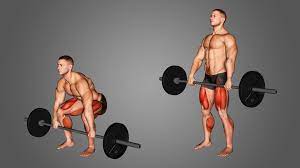
Different variations to deadlift:
To target different muscular areas, there are several ways to do the deadlift. To keep up a well-rounded training program, it’s important to change up your deadlift method. The amount of weight you use will vary based on your level of fitness. Additional weight should only be added when you are comfortable with the correct form.
Among these variations are;
Hex Bar Deadlift
The hex bar is shaped like a large hexagon and has handles on both sides. Hex bar deadlifts use more leg and less back muscle than a straight barbell.
- Right into the center of the hexagon bar, place your feet hip-width apart and take a step.
- As soon as hands can hold handles with straight arms, bend at the knees and push back a bit.
- Bringing your shoulders down, expand your chest.
- You should then lock out your arms and keep your back flat as you stand up straight.
- To gently lower the bar back to its starting position, tilt at the hips, bend the knees, and keep your back flat.
- Then relax.
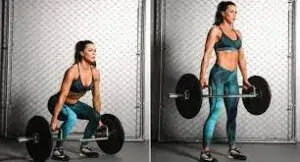
Sumo Deadlift
This is an easy-to-use variety that allows you total control over the weight as you work out.
- In front of a weighted barbell, take a wide posture.
- Pose yourself with your arms inside your legs, elbows just inside your knees, toes pointing slightly out, and hands on the bar inside your feet.
- Keep your shins level to the floor, shoulders over the bar, and back straight.
- It is important to have wide, pushed-out legs, firm, connected knees, and an upright body posture.
- While maintaining core stability, engage your legs, glutes, and lower back.
- Extend your quadriceps, raise and lower your shoulder blades, and hold the bar strongly.
- Kindly inhale deeply, plant your feet firmly, and pull yourself up using the bar without raising it off the ground.
- Maintain a low hip and a high chest as you take the bar down the length of your legs.
- Upon reaching the highest point, flex your glutes and lock your hips and knees.
- Hold onto the bar tightly as you slowly reverse the action.
- Then relax.
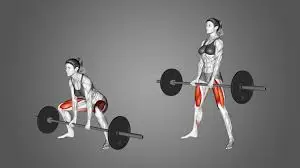
Romanian deadlift
This is a popular form that targets the hamstrings and most of the posterior muscles. Instead of bending their knees, the person keeps their legs reasonably straight during the entire workout.
- Starting at hip level, grasp the bar with your palms facing down.
- Keep your back straight.
- Your back may develop a slight arch as a result of this motion.
- In order to keep the bar close to your body as you lower it toward your feet, push your hips back during the exercise.
- It is recommended to have either straight legs or slightly bent knees.
- Your hamstrings ought should be able to move naturally.
- Lean forward from the hips and keep the barbell in front of your thighs to stand tall.
- Then relax.
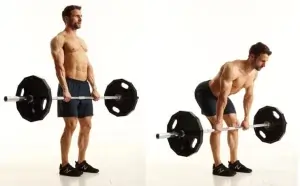
Romanian Single-Leg Deadlift
This workout increases core strength, stability, and balance.
- While standing on one leg, hold a dumbbell in the same hand as your leg.
- With your arms straight, prepare to drop your body toward the floor by bending your standing knee slightly and pressing your hips back.
- That would be a good place for you to begin.
- As your rear leg moves up behind you, bring your upper body down to the ground.
- Push your chest out and go down the dumbbell as far as you can without rounding your back to keep it near your shin.
- Once you’re in the starting posture, squeeze your glutes and hold it for a short while.
- Then relax.
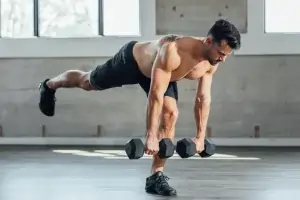
Cable Romanian deadlift
This is a suitable alternative for someone who lacks balance and coordination. A dumbbell or barbell is replaced with cables in this device. It is performed using the same technique as the Romanian deadlift, except the resistance is provided by cables rather than weights.
- If you’re not comfortable using weights and are a beginner, try the cable deadlift.
- Manage a cable machine from a low position using a medium resistance cable.
- Step your feet shoulder-width apart and set both hands on a rope.
- Gently extend your knees while bending your hips forward.
- Let your hands gradually rise to the top of your feet as a result of the cable resistance.
- To get back to starting posture, extend from hips and adopt a tall stance.
- Then return to your neutral position.
- Then relax.
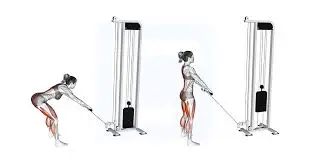
Stiff-legged deadlift
- Maintaining shoulder-width distance between your feet, take an overhand grip on the barbell.
- Bend your knees so that all of your weight is supported by your feet.
- To improve your balance, now grasp the ground with your feet.
- To remove the bar from your body, now tilt your hips.
- Your barbell will eventually approach your knees if you keep moving downward.
- With the device now pulled closer to your body, start your upward movement.
- Squeeze your lower back muscles, especially your glutes, and press your feet through the floor.
- Then return to your neutral position.
- Then relax.
- As you perform each repetition, keep your spine neutral.
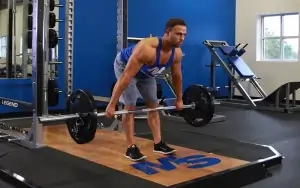
Remember these important safety measures when working out:
- Make sure you warm up properly before working out.
- Remember that an incorrect form might hurt you during a workout and prevent you from getting the results you want.
- Stop working out if you get unbearable pain.
- To keep your muscles healthy in between workouts, it’s crucial to allow yourself enough time off.
- Stay away from activities that make you nervous.
- When you work out, take your time. moving fast is not necessary.
- Use of the proper instruments is required.
- To avoid overtraining and muscle pain, gradually increase the number of repetitions and duration of your workouts.
- Working out in loose, casual attire that promotes relaxation and movement is best. Avoid wearing clothes that are too tight or stylish.
- Consume sufficient amounts of water to stay hydrated and maintain good muscle function.
When are you not working out?
- Fever
- Headache
- You’re not feeling well
- If a workout causes pain
Summary:
Workouts such as deadlifts are compound movements that simultaneously engage the hamstrings, glutes, and core muscles. The deadlift is a complex workout that targets the muscles in the back, shoulders, and legs. When done correctly, it can improve posture and help to grow and strengthen muscles.
All fitness levels can use it, and it can be adjusted to target different muscle groups. To make deadlifts easier, for example, one can use less weight or remove the weight entirely. You will perform better on the field, improve your general fitness level, and maintain better posture and spinal health if you add the deadlift into your workout routine.
To maximize the benefits and prevent injury, perform the exercise with proper form and technique. An excellent sport for building stability and functional strength is the deadlift. For anyone looking to improve their overall physical functioning and level of fitness, this is an essential workout.
FAQ:
Is deadlifting beneficial over the long term?
Workouts involving deadlifts also have long-term advantages. Having more muscle raises your resting energy expenditure because it burns more calories and has a higher metabolic activity than fat.
How come a woman should deadlift?
Encouraging weight loss and fat burning.
Workouts like deadlifts are a great way to burn calories. People can lose fat and get a leaner body by using this compound movement because of its high energy expenditure and benefits for muscle strengthening. It further increases metabolic rate, which boosts resting-state calorie expenditure.
How might deadlifts affect the way your body looks?
Developing your body’s general muscle mass is one of the biggest and most obvious benefits of deadlifting. The deadlift is a multi-joint, complex workout that targets the quads, upper back, hamstrings, lower back, and glutes, among other muscular groups.
Which three components go into a good deadlift technique?
A solid deadlift technique consists of three key elements: maintaining a tight core and pressing down through the legs and feet to promote leg muscle activity. Keep these three things in mind throughout every deadlift practice, especially when moving on to higher loads.
May I perform deadlifts daily?
To increase your health, mobility, muscle growth, and fat reduction, all you need to do is engage in deadlift training once a week with a full focus on deadlifts. For long-term training, this form of instruction needs to be conducted using an effective method. Doing deadlifts as a daily kind of workout is not a good idea. It does not have any advantages.
Which muscles are developed by deadlifts?
If you include deadlifts in your training routine and execute them correctly, you will gain more lean muscle mass in your arms, shoulders, back, legs, and program. You’ll also develop stronger abdominal muscles. Larger muscles and stronger cores are linked to increased strength and stamina as well as better sports performance.
What separates a squat from a deadlift?
Your lower body is targeted differently by full-body workouts like deadlifts and squats. For example, when performing a deadlift, you have to push your hips back and bend at the waist, whereas when performing a squat, you must bend at the hip and knee joints.
What is the safest kind of deadlift workout?
They are great for those who have back pain and also relieve pressure on the lower back. You may get more lower back strength from traditional deadlifts. For those who suffer from low back pain, Romanian deadlifts are the most secure choice.
What is the safest kind of deadlift?
These are great for those who have back pain because they relieve pressure on the lower back as well. Lower back strength may be increased with traditional deadlifts. When it comes to low back pain, Romanian deadlifts are the safest choice.
Who is not fit for deadlifts?
Deadlifting has the potential to worsen the back problems that you currently have. The deadlift, being a powerful full-body workout, may overstress your lower back, increasing the risk of a slipped disc or fracture.
What’s the effective number of deadlifts?
In a session, perform three to six deadlift sets. This holds for both 1–5 repetition strength training and 6–12 repetition hypertrophy training. If you perform 8–12 sets of quality deadlifts twice a week, you should see amazing results over time.
References:
- D. Bariya (2023d, Dec. 29). Which Muscles Are Used in Deadlift Exercises? – Mobile Physical Therapy. Mobile Physio Clinic. What muscles do deadlifts? https://mobilephysiotherapyclinic.in/
- Z. S. Mph, Oct. 27, 2022. Important details about the act of deadlifting. How Do Muscles Get Affected by a Deadlift? through Medical News Today Inside text reference: (Mph, 2022)
- November 13, 2019 / Chertoff, J. What Muscles Are Employed in Deadlift Exercises? Work Your Muscles with These Strengthening Exercises for the Deadlift Reference in the text: 2019’s Chertoff
- Sept. 27, 2023, CSCS, C. R. Every Muscle Applied to a Deadlift Is This. The health of men. Reference inside text: (CSCS, 2023) What muscles are used for deadlifts? https://www.menshealth.com/fitness/a44715137
- October 30, 2023: Wilkinson, H. What muscles are worked during a deadlift? | BulkTM. The muscles used in the deadlift may be found at https://www.bulk.com/uk/the-core/. Citation within text: (Wilkinson, 2023)
- Image 2, 2018 January 11; A, J. Workout Labs Exercise Guide on Pinterest are: a hex, Trap Bar, and Squats to Cage Deadlifts. Pin/716705728172935037 is available on Pinterest.
- Image 3, 2023, April 17; Luna, D. The advantages, muscles used, and more of the sumo deadlift. Motivate America. A URL for the Sumo Deadlift is https://www.inspireusafoundation.org.
- Image 4, Neudecker, K., and Hayes, A. (2023, June 2). How to Perform the Romanian Deadlift to Build Larger, More Powerful Legs. Male Health. Roman Deadlift Beginners Guide: https://www.menshealth.com/uk/building-muscle/a29202950
- Image 5, On July 24, 2024, Moves, A. How to Do a Romanian Deadlift with Just One Leg Alo Steals. Alo Swings. A single-leg Roman deadlift: https://blog.alomoves.com/movement/how-to
- Image 6, Cable Romanian Deadlift: Overview, Advantages, and Application (2023, May 5). https://liftmanual.com/cable-romanian-deadlift/ Lift Manual
- Image 7, Deadlift with stiff legs. (2021, May 7). [Visual]. Power and Toughness. Exercises like the Roman deadlift, or stiff-leg deadlift, can be found at https://www.muscleandstrength.com.

